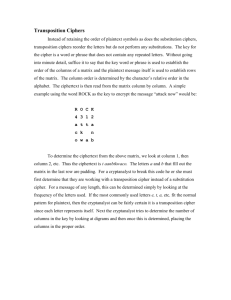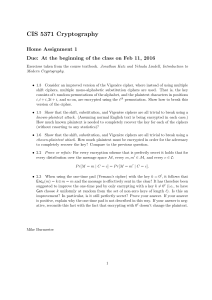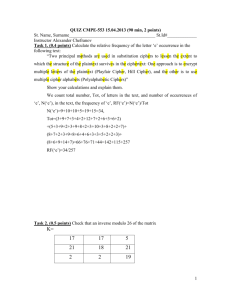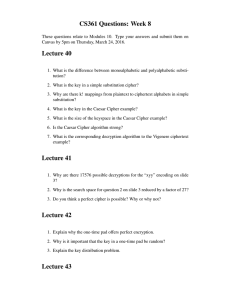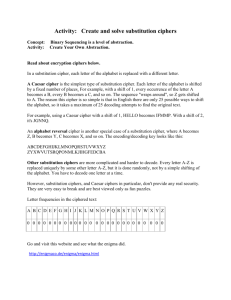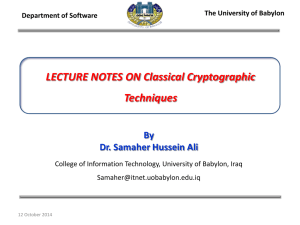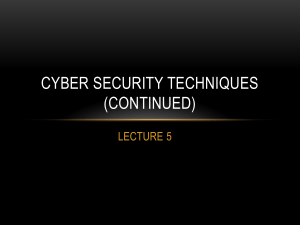1 Lec 4 : Data Security ...
advertisement
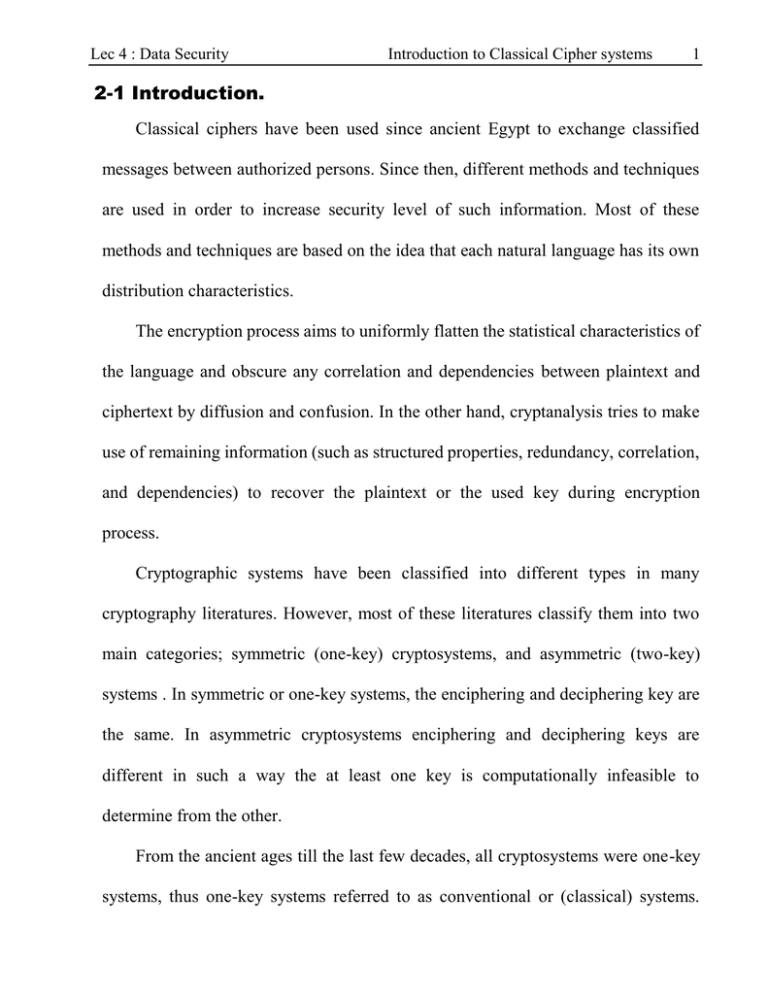
Lec 4 : Data Security Introduction to Classical Cipher systems 1 2-1 Introduction. Classical ciphers have been used since ancient Egypt to exchange classified messages between authorized persons. Since then, different methods and techniques are used in order to increase security level of such information. Most of these methods and techniques are based on the idea that each natural language has its own distribution characteristics. The encryption process aims to uniformly flatten the statistical characteristics of the language and obscure any correlation and dependencies between plaintext and ciphertext by diffusion and confusion. In the other hand, cryptanalysis tries to make use of remaining information (such as structured properties, redundancy, correlation, and dependencies) to recover the plaintext or the used key during encryption process. Cryptographic systems have been classified into different types in many cryptography literatures. However, most of these literatures classify them into two main categories; symmetric (one-key) cryptosystems, and asymmetric (two-key) systems . In symmetric or one-key systems, the enciphering and deciphering key are the same. In asymmetric cryptosystems enciphering and deciphering keys are different in such a way the at least one key is computationally infeasible to determine from the other. From the ancient ages till the last few decades, all cryptosystems were one-key systems, thus one-key systems referred to as conventional or (classical) systems. Lec 4 : Data Security Introduction to Classical Cipher systems 2 There are four basic types of classical cryptosystems based on substitution. They are ; ( simple substitution , homophonic substitution , polyalphabetic substitution , and polygram substitution systems ), and one cipher system based on transposition (permutation). 2.2 TRANSPOSITION CIPHERS. Transposition ciphers rearrange characters according to some scheme. This is done classically by some geometric figure, the figure is 2-dimentional array, and often called"Permutation". Example : Encrypt the word " RENAISSANCE " using 3*4 figure, using [2 4 1 3] scheme. 1 2 3 4 R E N A I S S A N C E Ciphertext : ESCAARINNSE. Many transposition ciphers permute characters of the plaintext with fixed period Let Zd be the integers 1... d, and f:Zd Zd be a permutation over Zd, then successive blocks of d characters are encrypted by permuting the characters according to f. M m1.....md 1 ,.....m2 d ..... is encrypted as Ek (M ) m f (1) ...m f ( d ) , m fd f (1) ....md f ( d ) Lec 4 : Data Security Introduction to Classical Cipher systems 3 Example :suppose d= 4 and ƒ E = [2 4 1 3] and ƒ D= [3 1 4 2], thus: M = RENA ISSA NCE Ek (M) = EARN SAIS CNE Dk (C) = RENA ISSA NCE 1 2 3 4 ƒE =[2413] 1 2 3 4 1 2 3 4 ƒD= [3 14 2] Figure ( 2-1 ) Encryption and decryption permutation To determine the expected number of characters required to break a permutation cipher with period d : possible arrangement of d characters (possible keys) = d!
